Affiliate disclosure: This post may contain affiliate links. Please see our Privacy Policy.
When your own small row of backyard raspberries is bursting with fruit, you wonder why anyone would be willing to pay $5 per half-pint at the grocery store. If you’re anything like me, you might begin to think backyard PYO raspberries are a good way to make a little extra cash. With careful planning and a bit of luck, you might just be right.
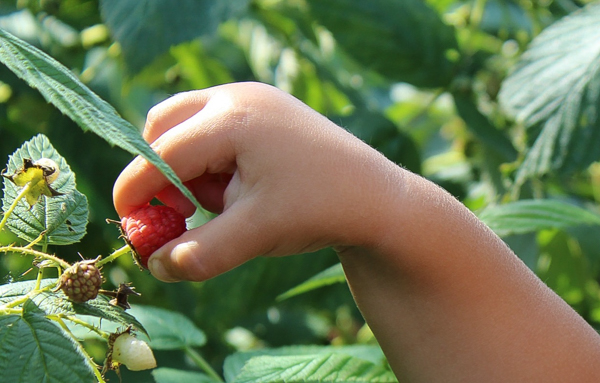
Demand
Due to high labor demands, a short season and perishability, raspberries tend to be a high-demand crop. Per the Maine Organic Farmers Association, local raspberry demand is almost never an issue.
The problem tends to lay in labor availability for the daily picking demands, as well as transportation and storage of a crop that keeps 1 week at most under ideal conditions. A Pick-Your-Own operation neatly solves both these issues by getting the customers to provide their own labor and providing the crop to them without any lead-time to eliminate spoilage.
Pick your own price becomes a bit hard to justify to customers that are used to picking flat after flat of strawberries in a short time for a low per-pound price.
Raspberries are not a quick picking or heavyweight item, so customers will see a high per pound price and time investment and shy away even when they’re easily willing to pay $5 per half-pint in the store. Even with these drawbacks, our local PYO operations in Central Vermont have lines of customers waiting at opening time and pick out in about an hour per day.
Never underestimate the drawing power of a perfectly ripe never refrigerated raspberry just off the vine.
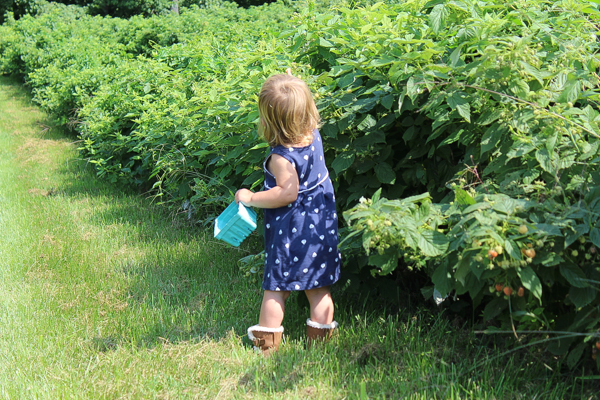
Price
Price largely depends on a combination of what the market will bear while considering input costs. In some areas, products sold by the pound require your scale to be inspected and certified regularly, thus selling by the pint tends to be more feasible for small operators. If you’re comparing with other local operators charging by the pound, keep in mind that one pint of berries roughly equals ¾ pound.
In the 2015 season, a quick online survey of operations on the East Coast from Pennsylvania to Maine shows an average price of $5 per pound of $4 per pint. Keeping in mind that pints are often heaping, rates work out to roughly equivalent.
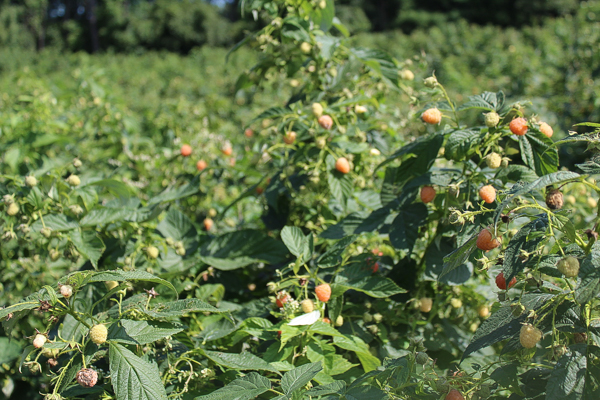
Initial Investment
Generally, you can buy raspberry canes for around $3 per cane. The raspberries are planted 2 feet apart in rows spaced 8 feet. A 40×50 foot area planted in raspberries means five 50 foot rows or a total of 250-row feet.
Since there’s one plant every 2 feet, it costs $1.50 per row foot to plant raspberries. In total, the 250-row feet would cost $375 to plant.
Plantings last 10-20 years depending on care.
There are ongoing costs, including fertilization, maintaining trellises for summer-bearing raspberries or mowing for fall-bearing plants. Add in advertising and potentially some type of insurance and it adds up quick.
Yield=1pint/foot or 250 pints at $4 per pint. $1000 per year starting in year 3.
Yield and Profit
On average, raspberry plants yield about 1 pint per foot. If you’re planting 250-row feet and selling them at $4 per pint, that’s a payback of $1000 per year starting 3 years after planting.
That assumes that you don’t turn any of the berries into value-added products like raspberry jam or raspberry pies.
Assuming that you spend about $200 per year in ongoing costs, your initial investment still pays back in the first year of operation.
Other Considerations
Decide whether to grow summer bearing or fall-bearing raspberries. In cold climates, fall-bearing raspberries can be a gamble. An early frost can destroy your whole crop.
Fall-bearing plants don’t require trellising, which is much easier in the long run in my opinion. It really depends on when you think you can draw customers, and whether or not you have other value-added products to sell in either the summer or fall.
Beyond choosing varieties, logistical considerations like parking and potentially insurance should be discussed.
Raspberries have other benefits besides profits. They’re an excellent way to feed the bees, even if you’re not raising them yourself. If you are raising bees, honey is a great value-add to sell at your pick your own stand.
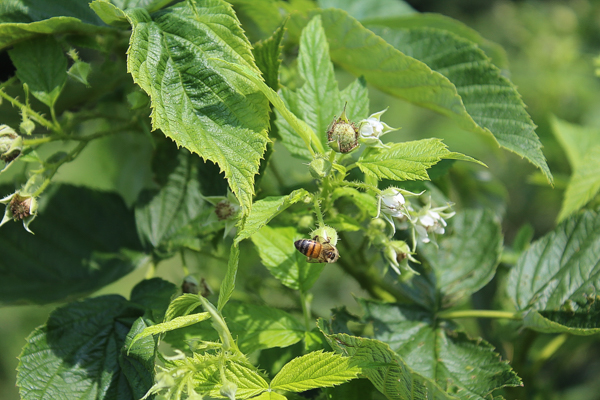
Is A Pick Your Own Worth It?
The trick is, is it worth devoting that much space to a crop that will bring in $800 per year?
To us it is. Why? We love raspberries. If no one comes, that’s even better.
I’ll stand out there gorging on them until I can’t buckle my pants and my teeth turn purple.
Perhaps a backyard PYO operation is just a good justification for a huge patch, and a chance to meet your neighbors.
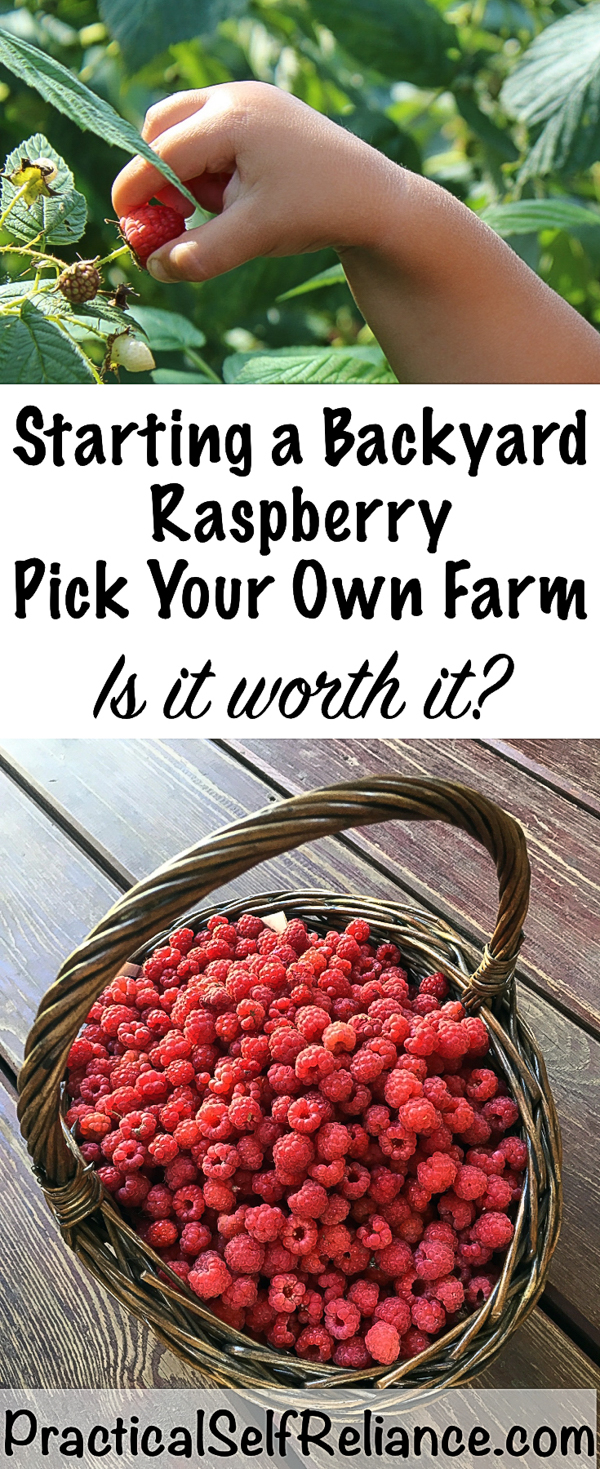
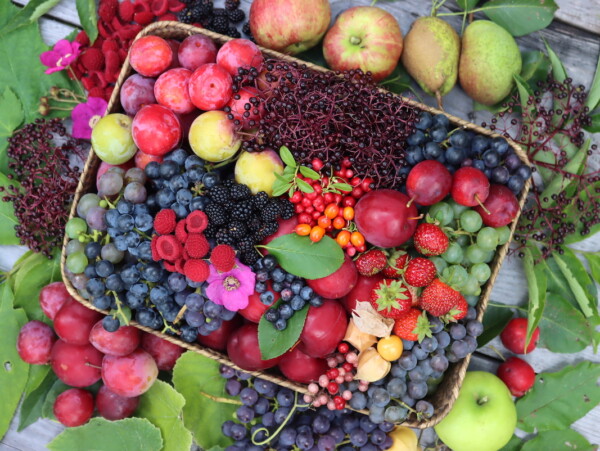
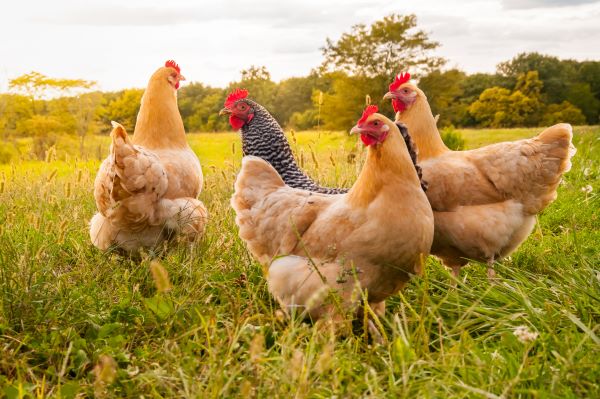
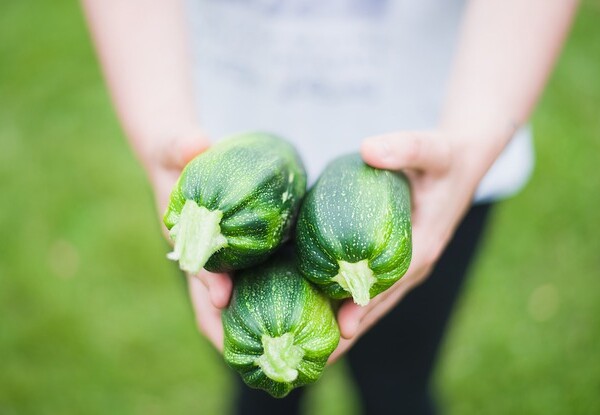
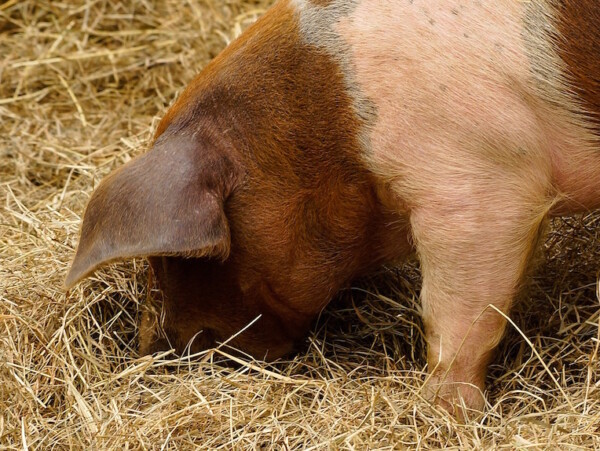










Hi Ashley, reading about starting a backyard raspberry picking business. We have actually considered doing this but our fear is that there are so many bees that I’d be worried about people being stung while picking. Does this happen on your property? We’ve had to really be careful ourselves while picking them and when friends come I warn them about checking the berries all over before picking them. We have both early and late bearing varieties. I make my husband pick them for me! Jan in MA
There are a boatload of pollinating bees around at every raspberry pick your own I’ve been to. And yes, we always have to be careful. It’s just part of the territory I’m afraid, but I’ve never really seen it be an issue at a PYO operation. There’s kids everywhere, including my own two young preschoolers, and I’ve never seen someone get stung. I’m sure it does happen though.